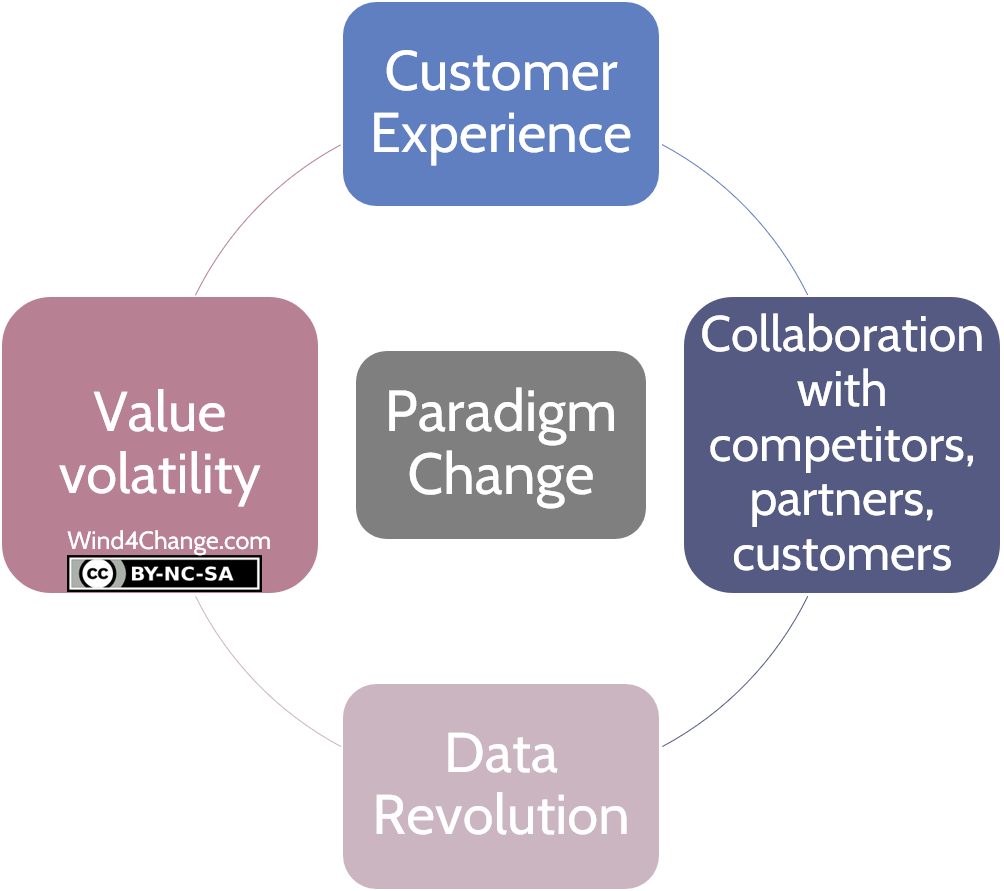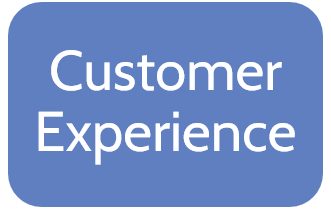Customer Experience: Digital is more than the emergence of new disruptive technologies. It also involves a change of paradigm. The first one is the switch from Product to Customer Experience.
- From Product to Customer Experience Paradigm Shift coming with Digital
- How products and services evolve and illustrate the Paradigm change?
- How digital technologies support the Customer Experience change of Paradigm ?
- What’s next? Learn more about Digital, the other new paradigms and the disruptive technologies
- Do you want to learn more about the Customer Experience? Here are some valuable references

From Product to Customer Experience Paradigm Shift coming with Digital

Customer experience (also known as CX) is the interactions and experiences a customer has with a business throughout the entire customer journey, from first contact to becoming a long term satisfied customer.
For many people, customer service and customer experience are similar. But one is a single touch point with a brand, while the other impacts feelings and emotions, and covers the entire customer journey.
This doesn’t mean that companies should stop their efforts in building high-quality products. Instead, they should consider this extension of playground and deliver in addition to high quality products, customer experiences with the same level of quality. They should also switch from features focus to experience and outcomes focus. Emotion is a large part of the customer experience and should be considered when designing the customer journey and related experience.
Some illustrations of this trend:
- Research by American Express found that 86% of customers are willing to pay more for a better experience.
- Customer experience is now the number one brand differentiator.
- Research by the Journal of Consumer Research has found that more than 50% of an experience is based on an emotion as emotions shape the attitudes that drive decisions.
How products and services evolve and illustrate the Paradigm change?
Traditional product/service
Traditional product specifications and features are by definition completely non-customized. On the contrary, experiences, are distinct and personal for each individual who subjectively assessed them for quality level and ability to meet their expectations.
Product as a service and Digital perspectives
What is product as a service? It is the idea of selling the services and outcomes of a product rather than the product itself. Without a doubt, it is not a new concept.
For instance, GE, Rolls-Royce and Pratt & Whitney were among the early implementers of product as a service, charging on an hourly basis for power from their jet engines. Rolls-Royce began offering it in the 1960s and has since trademarked the term “Power-by-the-Hour”. Now all the aerospace industry uses this term.
Product as a service enables selling additional services to the product that usually have a higher profit margin. In addition, it makes it possible also to better take advantage of potential sources of revenue over the full product life-cycle. Indeed, this is a first step to customer experience.
And Digital pushes this approach further. Printers have long been leased instead of owned, with customers paying for a service contract. Manufacturers such as HP, Lexmark and Xerox have more recently augmented their service offerings sensing when ink cartridges are low to automatically order and ship replacements.
Software is eating the world
Software is eating the world
Surely, this famous sentence highlights that the value mix within a product between hardware and software is changing quickly.
The change is affecting all sorts of traditional industrial products. For instance during a century, cars consisted of a mix of combustion engines and various other engineered parts combined with growing amounts of electronics and microelectronics. Today software has come to dominate the automotive works.
The sources of value in a typical product currently are:
- Software 40%,
- Electronics 30% ,
- Mechanical parts 20%,
- Digital components 10% . Digital components include artificial intelligence capabilities like machine learning, voice assistant user interfaces. And also, natural language processing, analytics capabilities. So, this makes it possible to capture and process large amounts of data.
In the future, estimation of the value breakdown will be:
- Software 20%,
- Electronics 5%,
- Mechanical parts 5%,
- Digital 70%.
How digital technologies support the Customer Experience change of Paradigm ?
Digital technologies enable the convergence of 3 worlds:
- Traditional product
- Software
- Internet platform
Some digital technologies are especially involved in the move from product to customer experience. Even if we have seen that they are all connected especially those related to Data.
Internet of Things (IoT):
As explained in the first post on Digital disruptive technologies, IoT on-boards the intelligence required to generate data (operating parameters, usage data, physical measurements, volume, etc.), captures it from its environment and automatically transfers it to the network. Certainly, Data capturing and local intelligence are required to customize experience.
Artificial Intelligence:
AI is a lever for both product and service to augment customer experience: capacity to autonomously learn, adapt and improve at increasingly lower cost.
Smart connected products allow to go beyond features to provide differentiation all over the user experience. It is all the more so that the design should not be product focused any longer but customer experience focused even if the product remains a critical piece of it.
Michelin illustrates this change of Paradigm from product to customer experience. The company offers the following outcome to its clients: 1.5 liters less diesel per truck, per 100 kilometers. But the promised service, labelled Effifuel, has a complex delivery mechanism. Indeed, Michelin fits trucks from commercial logistic fleets with on-board telematics that track drivers’ gear-change patterns. As a result, the data is used to monitor optimal driving behavior in relation to road conditions, weather and geography. A further part of the outcome package is to customize driver training.
What’s next? Learn more about Digital, the other new paradigms and the disruptive technologies
Check my other posts on Digital and the new paradigms:
- Customer Experience (this post)
- Coopetition and platform business model
- Data revolution
- Value volatility
And how Agile fits in the digital picture.
Check my post about the disruptive technologies that this article refers to.
Do you want to learn more about the Customer Experience? Here are some valuable references
Overview on Customer Experience
- A good post from Superoffice
- Another good post from QMinder
Product as a service
- A good post from SearchERP
